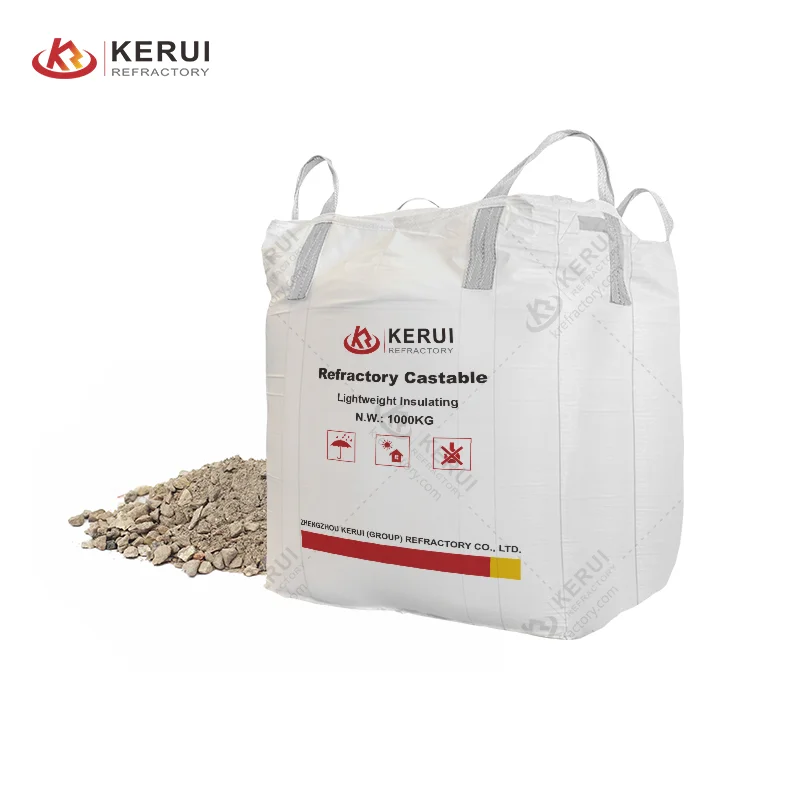Article Navigation – Selection of Refractory Materials for Boilers
- Introduction to Boiler Refractory Materials
- Types of Refractory Materials for Boilers
- Key Selection Criteria
- Technical Specifications and Testing Standards
- Installation and Maintenance Best Practices
- Case Studies: Material Selection in Different Boiler Types
- الخاتمة
1. Introduction to Boiler Refractory Materials
Boilers operate under extreme thermal, mechanical, and chemical stresses, making the selection of refractory materials critical for efficiency, safety, and longevity. Refractories in boilers serve as thermal insulators, protect structural components, and resist corrosion from ash, slag, and flue gases. This guide explores the types of boiler refractories, technical specifications, and best practices for selection and maintenance.
2. Types of Refractory Materials for Boilers



Boiler refractory are classified by composition, application method, and temperature resistance. Below is a detailed comparison:
2.1 طوب طين النار الطيني
| الممتلكات | Details | التطبيقات |
|---|---|---|
| المحتوى ₂O₃ المحتوى | 25–40% | Combustion chambers, lower-temperature zones |
| درجة الحرارة القصوى للخدمة | 1200–1400°C | Industrial steam boilers |
| المزايا | Cost-effective, easy installation | |
| Limitations | Low slag resistance |
2.2 الطوب عالي الألومينا
| الممتلكات | Details | التطبيقات |
|---|---|---|
| المحتوى ₂O₃ المحتوى | 50–90% | High-heat zones (e.g., furnace arches) |
| درجة الحرارة القصوى للخدمة | 1400–1800°C | Power plant boilers, CFB boilers |
| المزايا | مقاومة ممتازة للصدمات الحرارية | |
| Limitations | Higher cost |
2.3 المصبوبات العازلة
| الممتلكات | Details | التطبيقات |
|---|---|---|
| التركيب | Lightweight aggregates (e.g., vermiculite) | Boiler walls, doors |
| التوصيل الحراري | 0.5–1.2 W/m·K | Energy-efficient linings |
| المزايا | Rapid installation, low heat storage | |
| Limitations | Lower mechanical strength |
2.4 Silicon Carbide Refractories
| الممتلكات | Details | التطبيقات |
|---|---|---|
| درجة الحرارة القصوى للخدمة | Up to 1600°C | Ash hoppers, cyclone burners |
| الميزة الرئيسية | Extreme abrasion and corrosion resistance | Biomass/waste-to-energy boilers |
| المزايا | Long lifespan in harsh environments | |
| Limitations | Very high cost |
3. Key Selection Criteria
Choosing the right refractory for boilers depends on four critical factors:
3.1 Operating Temperature
- Low-Temperature Zones (<1200°C): Fireclay bricks or insulating castables.
- High-Temperature Zones (>1400°C): High alumina bricks or silicon carbide.
3.2 Chemical Environment
- Acidic Conditions: Use silica-rich refractories.
- Alkaline Slag/Ash: Magnesia or zirconia-based materials.
3.3 Mechanical Stress
- مقاومة التآكل: Silicon carbide or dense castables for ash-handling areas.
- التدوير الحراري: Materials with high thermal shock resistance (e.g., high alumina).
3.4 Thermal Conductivity
- احتياجات العزل: Low-conductivity castables or ceramic fiber modules.
- Heat Retention: Dense fireclay bricks.
4. Technical Specifications and Testing Standards
Refractory materials must comply with international standards for reliability:
4.1 Critical Performance Indicators
| المعلمة | Test Method (ASTM/ISO) | Ideal Range for Boilers |
|---|---|---|
| قوة التكسير على البارد | ASTM C133 | >30 MPa (high-stress zones) |
| التوصيل الحراري | ASTM C201 | 0.5–2.5 W/m·K |
| المسامية | ASTM C20 | <20% (dense bricks), 40–70% (insulating) |
| مقاومة التآكل | ASTM C704 | <15 cm³ loss (severe abrasion zones) |
4.2 Certifications to Verify
- ISO 9001 (Quality Management)
- ASTM C1795 (Insulating Castables)
- EN 1402 (Unshaped Refractories)
5. Installation and Maintenance Best Practices
5.1 Installation Guidelines
- أنظمة التثبيت: Use V-anchors or hex mesh for castables to prevent spalling.
- Curing Time: 24–48 hours for castables at 10–40°C.
- سُمك المفصل: Keep <2 mm for brick linings to minimize thermal leakage.
5.2 Maintenance Tips
- Regular Inspections: Check for cracks, erosion, or spalling every 6 months.
- Patch Repairs: Use phosphate-bonded plastics for minor damage.
- Avoid Thermal Shock: Gradually heat/cool boilers during startups/shutdowns.
6. Case Studies: Material Selection in Different Boiler Types
6.1 Coal-Fired Power Plant Boiler
- التحدي: High ash content and temperatures up to 1500°C.
- الحل: Silicon carbide refractories in ash hoppers + high alumina bricks in combustion zones.
- Outcome: 30% longer lifespan compared to fireclay.
6.2 Waste-to-Energy Boiler
- التحدي: Corrosive flue gases (HCl, SO₂).
- الحل: Zirconia-enhanced castables with acid-resistant coatings.
- Outcome: Reduced downtime for repairs.
7. الخاتمة
The اختيار المواد الحرارية للغلايات requires balancing temperature resistance, chemical compatibility, mechanical durability, and cost. High alumina bricks excel in extreme heat, while insulating castables optimize energy efficiency. Always prioritize certified suppliers and adhere to installation protocols to maximize boiler performance. By aligning material properties with operational demands, industries can achieve safer, more efficient boiler systems with reduced lifecycle costs.





